Spanish Electives
Science Electives
Latin 4: Prose (Heroes and Villains)
Latin 4 Prose is an advanced level language course for the serious student who has mastered the basic elements and concepts of Latin 1 and 2, and 3 and wishes to continue the study of Latin literature, but not as Advanced Placement. The Latin Prose student reviews all Latin forms and grammar, and becomes more proficient in reading, understanding and translating the classical Latin periodic sentence in Roman prose writers such as Cicero, Livy, and Pliny. Students will encounter the genres of history, commentary, and oratory.
NOTE: LATIN 4 PROSE is offered in the Fall of odd years (2025, 2027,etc.)
AP English Literature and Composition
This full-year course is intended for the seniors who qualify in two ways: First, they must have the desire to sustain a high degree of effort throughout their senior year; second, they must have the proven ability to do accelerated work. The course itself has two goals: 1) to prepare the students to pass the AP exam administered in May of the senior year, and 2) to prepare them to take their place in a sophomore English class at whatever college they attend. The content of the course is divided into two major parts. The first is the study of literature required by the AP exam. Here the students become familiar with the novel, short story, poem, drama, and essay, particularly in their historical development. In the second part, the students work at perfecting their writing skills. Here they do two separate kinds of practice: 1) that aimed at proficiency for the exam itself, and 2) that aimed at proficiency in written expression for college level audiences. Admission to this course is by application, recommendation of the junior year teacher, and approval of the Chair. English 403AP is a senior English course in which the 1.00 increment is awarded by the UC system.
AP Latin
The Latin 4AP course is an advanced reading course. Selections from De Bello Gallico Books 1, 4, 5 and 6 and Vergil’s Aeneid Books 1, 2, 4, and 6 are read in Latin. Students will also read Caesar’s Conquest of Gaul Books 1, 6, and 7 and Vergil’s Aeneid Books 1, 2, 4, 6, 8, 10, and 12 in English. In addition to appropriate translation skills, students are expected to employ literary analysis (much as in an English literature class), in order to fully appreciate the Latin work being studied. The aims of this year-long course are: to improve the students’ ability to read, understand and translate Latin poetry and prose; to expose students to poetic syntax, figures of speech, and meter; to involve students in literary analysis of Latin poetry and prose; to enhance the student’s understanding of the literary and social contexts of the Roman world of the first century B.C. and A.D.; and to prepare students for the Advanced Placement exam in Latin.
*This course will be offered pending adequate enrollment.
*Class receives honors weighting in SI weighted GPA and UC/CSU GPA calculations
AP Mandarin Language and Culture
AP Mandarin 4 is a two-semester advanced language course designed for students who have excelled in their previous Mandarin study and who are interested in pursuing a more rigorous course of study in Mandarin language and Chinese culture. Students will have the opportunity to demonstrate and improve proficiency in the three modes of communication—Interpersonal, Interpretive, and Presentational—defined as foundational in the Standards for Foreign Language Learning in the 21st Century. This course will enhance the student’s cognitive, analytical, and communicative skills while emphasizing both fluency and accuracy in Mandarin. Authentic materials will be used to enhance student exploration of culture in both contemporary and historical contexts. The class is conducted mostly in Mandarin and students are encouraged to speak in Mandarin at all times.
*This class will be offered pending adequate enrollment.
**Class receives honors weighting in SI weighted GPA and UC/CSU GPA calculations
Mandarin 4
Mandarin 4 is a two-semester course designed for students who have received an A, B or C+ in Mandarin 3 and/or teacher approval. This course is designed for students who are interested in using their foundation in Mandarin to explore in greater depth the cultures of the Chinese world through art, film, literature, history, current events, and social justice issues. The primary aim of this course is to improve the student’s ability to speak, read, write and comprehend Mandarin in more sophisticated contexts. The student will review vocabulary and grammar, master new advanced language concepts, and enhance his/her knowledge of the diversity of the Mandarin-speaking world. The class is conducted entirely in Mandarin except for complex grammatical explanations and students are expected to speak in Mandarin at all times.
AP Spanish Language & Culture
AP Spanish language covers the equivalent material of a third-year college course in advanced Spanish composition and conversation. The aims of this two-semester course are: to improve dramatically the student’s speaking ability; to review systematically grammar previously studied; to master — orally and in writing — new and more complex grammar concepts; to expose students to the literary use of Spanish and to increase both their literal and critical reading skills; to prepare students for the Advanced Placement Spanish Language Examination; and to enhance the students’ knowledge of the cultural diversity of the Spanish-speaking world. Students will be required to speak Spanish in a variety of situations ranging from class discussions to oral presentations and debates. Students will read newspaper and magazine articles, short stories, poems, and excerpts from novels or plays by peninsular and/or Latin American authors. The selected class materials are designed to stimulate and perfect conversation and to assist students in the imitation of the native speaker’s pronunciation, rhythm, moods and humor as their abilities increase. This class is conducted in Spanish, and students are expected to speak Spanish at all times.
*Class receives honors weighting in SI weighted GPA and UC/CSU GPA calculations
Spanish 4
This two-semester course is an advanced language course designed for those students who wish to improve and build upon their Spanish skills and delve deeper into the cultures and literature of the Spanish-speaking world. Prominent topics uncovered will be the volatile history of Latin American dictatorships, the impact and perception of Hispanics/Latinos in the U.S., and the diversity and beauty of art in the Spanish-speaking world. The course is comprised of an on-going review of all major grammar structures, as well as a thorough study of more complex grammar concepts. Considerable emphasis is given to broadening his/her cultural awareness of the Spanish-speaking world and increasing his/her ability to comprehend and express him/herself in both spoken and written Spanish. In order to maximize interaction with the language, students are expected to speak Spanish at all times.

